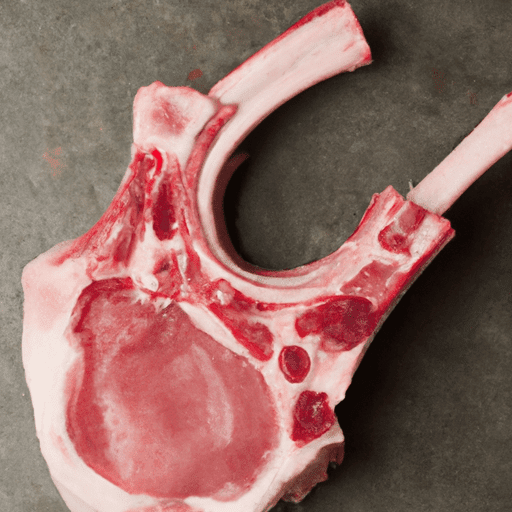All You Need to Know About Bone-In Pork Loin Roast
When it comes to hearty and succulent cuts of meat, few can match the bone-in pork loin roast. Whether you’re preparing a Sunday feast or a special occasion meal, this versatile cut is sure to impress. In this blog post, we’ll dive into the mouthwatering taste, various cooking methods, and nutritional value of bone-in pork loin roast. So let’s get started!
Taste and Texture
Bone-in pork loin roast boasts an exceptional flavor profile that combines tenderness with a subtle sweetness. This cut is moderately marbled with just the right amount of fat, which contributes to its juiciness. The bone adds an extra depth of flavor during the cooking process, resulting in an unbelievably delicious and moist roast.
Cooking Methods
Roasting
Roasting is the most popular method for cooking bone-in pork loin roast. To begin, preheat your oven to 350°F (175°C). Season the roast with your choice of herbs and spices, such as rosemary, thyme, garlic, and pepper. Place the roast on a rack in a roasting pan, ensuring that the fatty side faces up. Cook the roast for approximately 20 minutes per pound, or until the internal temperature reaches 145°F (63°C). Once cooked, allow the roast to rest for 10-15 minutes before carving.
Braising
For a more tender and flavorful result, consider braising your bone-in pork loin roast. In a large Dutch oven or deep skillet, sear the roast on all sides until golden brown. Remove the roast and set it aside while you sauté onions, garlic, and other aromatic vegetables. Deglaze the pan with broth, wine, or a combination of both, and return the pork to the pot. Simmer the roast, covered, over low heat until it reaches an internal temperature of 145°F (63°C). The low and slow cooking process will yield a succulent and melt-in-your-mouth meal.
Common Uses
Bone-in pork loin roast offers endless culinary possibilities. Here are some common uses to inspire your next meal:
Sunday Roast: The classic Sunday roast with all the trimmings is the perfect occasion to showcase this delicious cut. Pair it with roasted vegetables and creamy mashed potatoes for a comforting and satisfying meal.
Holiday Feast: Elevate your holiday spread with a bone-in pork loin roast as the centerpiece. Its impressive presentation and mouthwatering taste will leave your guests eager for seconds.
Sandwiches: Thinly sliced bone-in pork loin roast makes for exceptional sandwiches. Layer it on crusty bread with your favorite condiments and enjoy a gourmet lunch experience.
Nutritional Value
Bone-in pork loin roast is a rich source of high-quality protein necessary for muscle growth and repair. It also contains essential vitamins and minerals such as vitamin B12, zinc, and iron. While it does contain fat, trimming excess fat before cooking can help keep its overall fat content in check. As with any food, moderation is key to maintaining a well-balanced diet.
Interesting Facts
- Bone-in pork loin roast is often referred to as the “prime rib of pork” due to its tenderness and succulence.
- In traditional European cooking, bone-in pork loin roast is commonly used to make hearty stews such as choucroute garnie and sauerkraut.
- The bone, when left attached during cooking, imparts more depth of flavor to the roast and helps to retain moisture.
Whether you’re a seasoned home cook or a culinary adventurer, bone-in pork loin roast is a must-try ingredient. From its delightful taste and versatile cooking methods to its nutritional value and interesting history, it’s a cut of meat that deserves a spot on your dining table. So go ahead, embrace the flavors and enjoy the experience of cooking and savoring bone-in pork loin roast!
Origin:
- The bone-in pork loin roast is commonly found in various cuisines around the world, but it is particularly popular in Western cultures, including Europe and North America.
Common uses:
- The bone-in pork loin roast is often used for roasting due to its tenderness and flavor. It can be cooked whole or sliced into individual chops.
- This cut is widely used to make traditional dishes like roast pork with crackling, pork roast with herbs, or stuffed pork roast.
Nutritional benefits:
- The bone-in pork loin roast is a good source of lean protein and provides essential vitamins and minerals.
- It is a rich source of thiamin, vitamin B6, vitamin B12, niacin, riboflavin, and zinc.
- This cut is relatively low in fat compared to other cuts of pork, making it a healthier choice for those watching their fat intake.
Unique properties or historical significance:
- The bone-in pork loin roast is known for its succulent and tender meat, which is enhanced by cooking it with the bone attached.
- The bone adds flavor and helps to retain moisture during cooking, resulting in a juicier roast.
- Historically, pork loin has been a staple in feasts and celebratory meals throughout different cultures due to its impressive presentation and delicious taste.
- The bone-in pork loin roast is often associated with holiday meals and special occasions, contributing to its tradition and significance in festive culinary traditions.




Use the share button below if you liked it.
It makes me smile, when I see it.